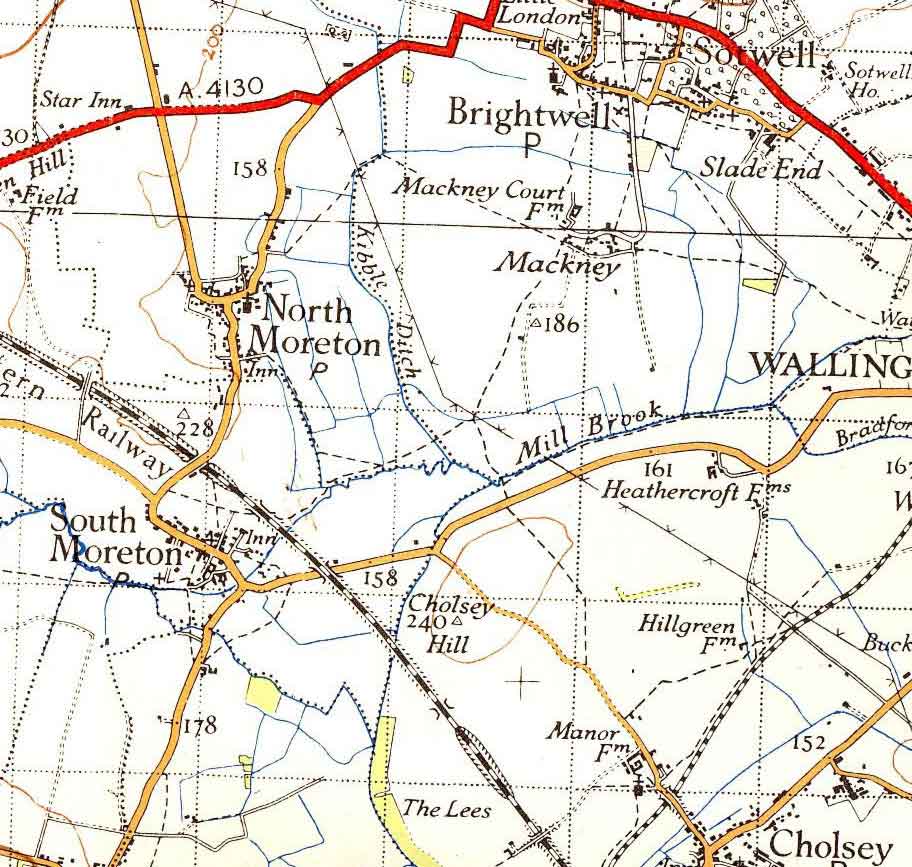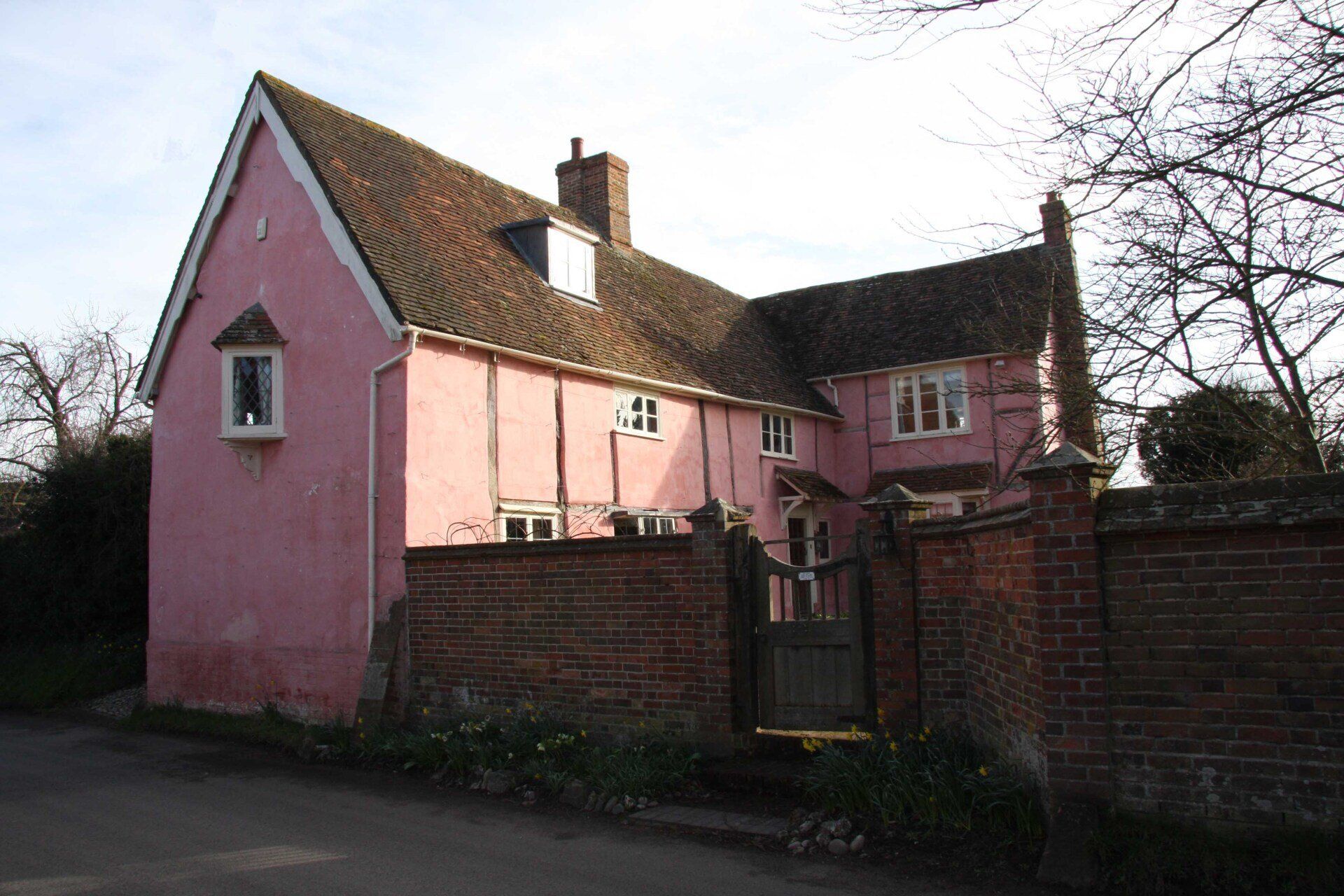History of North Moreton
Click on article for more information:
The medieval manor of North Moreton is recorded in the Domesday Book of 1086. The manor house, where the Stapleton family lived was situated East of the church but can now only be identified by the remains of a moat. North Moreton retains many houses from the 15th, 16th and 17th centuries, despite the devastating fire in 1807 which destroyed one quarter of the village including one whole side of the main village street.
North Moreton has always been a village existing solely within Berkshire boundaries until 1974 a year which saw comprehensive reorganisation of local government in England and Wales. An indication as to how deeply North Moreton was embedded within Berkshire is indicated by the fact that Abingdon was the county town of Berkshire until 1867. Reading only became the new county town in that year taking over from Abingdon which remained part of the county until 1974. On this date several of the historic counties disappeared, new counties were created and all had significant boundary changes. North Moreton was swallowed up within Oxfordshire and despite losing the title of being within the 'Royal' county of Berkshire it is probably safer for the village to be within Oxfordshire.
"The first record of North Moreton is in the year 944 and it is one of many villages in historic Berkshire whose name ends with ton meaning a ` homestead'. The mor signifies, simply, a fen. With the arrival of the Normans in 1066 there came in due course Norman rule and a Norman church. North Moreton seldom had a resident lord of the manor though influential families such as the Stapletons played an important role over three centuries. The Stapletons largely rebuilt the church in the thirteenth century, endowing Stapleton's Chantry with some unique glass from the period." The subsequent centuries have not been without their high and low points. "At the very end of the sixteenth century there was a ‘ cause celebre' in the famous witch-craft case bringing North Moreton to the national stage and leading to the allegedly-bewitched Anne Gunter going before the Court of Star Chamber and before King James I himself. An unusual feature of the Cromwellian period was the high number of marriages performed in All Saints church probably attributable to the lords of the manor being relations of Oliver Cromwell. North Moreton became acceptable for church weddings even when nationally they were forbidden.
Village life for centuries produced its even tenor of the rotati on of crops and the struggle for existence - North Moreton was never a rich village as the lack of any monuments in the church testifies. But change in many directions came in the last one hundred and fifty years. The Enclosure Award (late- in 1849 ) stablilised the economy of the village. The growth of Didcot and the development of railways gave employment and a new vicar, Albert Barff brought fresh vigor to the community.
The village paid its debt to the nation in two World Wars and the later twentieth century has seen a change in population with many professional people making their way to London daily as commuters. But, in the end, the sounds of sheep bleating, combine harvesters at harvest time and of tractors down the High Street, remain evocative of a North Moreton whose eternal roots are in the soil."
Maps of North Moreton
Click on the corresponding map to see what the village looked like in the past
Stapleton's Chantry
Is now a home but was originally a 15th century detached chantry chapel with a priest's hole and a secret underground passage. A chantry was defined as the endowment of one or more priests to say or sing Mass for the soul of the endower, in this case Sir Miles Stapleton. Unfortunately Edward VI's reign resulted in the loss of the chantry during the abolition of Chantries in 1547.
The Bear
Locals have been having fun in the pubs in North Moreton, since the 15th century. There are stories of locals running around the North Moreton graveyard since 1892 after imbibing too much alcohol. There are tales of Great Western Railway navvies coming to North Moreton to wile away their evenings and their newly-earned wages, drinking too much and fighting the locals. North Moreton had four pubs in those days, The Queen Victoria, The Star, The Victoria and of course the The Bear which was the 'posh' pub, being the only pub in the village with a licence to sell spirits. This is now the only surviving pub village as all the others have closed their doors, the Queen Victoria finally closing in 1999 after Morrells Brewery shut down its business.
It is thought that the The Bear may have originally been in existence from the 15th century as a local public house serving the village. In the 17th Century the 'Bear Inn' may have been an occasional coaching inn, with coaches travelling from Wallingford to Wantage choosing the turnpike roads that were springing up at that time, rather than the poor quality tracks that they were replacing. With its situation on the Wallingford Road it is more likely that the Star Inn would have benefitted from the passing trade, though coaches travelling specifically through North Moreton would have probably stopped here for refreshment.
Norman & Gladys Mawrey
Ran the Bear Inn from 1952 until 1977, so far the longest tenure on record. Norman was an ex-Salford rugby league player. In 2007 Gladys was still with us having just celebrated her 99th birthday. The Mawreys also ran the village shop in the adjacent building, the awning has now been removed and the shop is now a private house.
During this period the pub was a tied house owned by Watney Mann & Co. The pub served beers made by Ushers brewery of Trowbridge, then part of the Watneys group but now sadly long gone. These pictures show Norman and Doris during their tenure. In 1971 the Bear became a free house, Norman Mawrey having negotiated the purchase of the freehold of the business for the princely sum of 7,450. Click on the image below to view the letter from Watney Mann in full.
As a note - Doris made it to 108 and was briefly in the top 100 oldest people in the kingdom before her death. Like his brothers, Norman had been a seafarer in his youth before the War but the family has no record of his every having played Rugby League (though the old villain was quite capable of spinning a yarn about it). His son Robert was also a merchant navy officer.
Richard Mawrey QC
Mawrey's pets
New Some long standing residents of the Bear were the Mawrey's pets. Pictured here is the pet Columbian parrot who seems to have been a regular drinker of Squires London Dry Gin, another defunct alcoholic drink. If the parrot's liver managed to survive it is possible that he or she is still with us, parrots being long-lived. At the moment the parrot's name is unknown though some have suggested it might be Ed.
Norman and Gladys Mawrey were very much at the centre of village life being involved not only with the running of the pub and shop but also being involved with the sporting life of the village. In those days the Bear was host to both a good darts and bar billiards team. These days we just have a darts team. Click on each image for a larger size photograph.
Witchery at the Moretons
In the 17th Century there was a famous witchcraft case in North Moreton. In the summer of 1604 a woman named Anne Gunter,a member of the old Kintbury family and the daughter of Brian Gunter appeared to fall ill. Her symptoms consisted of f having fits, falling into a trance, rolling her eyes, walking on her ankles, vomiting, producing pins from her nose whilst her clothes would fall off spontaneously when people visited her. She also claimed that she saw familiars. At that time it was believed that familiars were demons which would propagate the will and message of their master Satan to spread lies and deceit in order to thwart the Kingdom of God. The above manifestations encouraged a large number of people, from peasants to learned men of both University and Church, to make the journey to see for Anne for themselves. During the manifestations Anne babbled about Elizabeth Gregory the sister-in-law of the two dead Gregory boys and also about Agnes Pepwell and her daughter Mary, also members of the Gregory family.
Agnes Pepwell had long been reputed to be a witch and so the story quickly arose that poor Anne Gunter had been bewitched by the three vengeful Gregory women in retaliation for the death of the two boys. The three women were then officially charged with bewitching her, although the case at the Abingdon Assize Courts failed to obtain a conviction. A suit was later filed at the Court of the Star Chamber in London where both the reigning King and the Bishop of Salisbury took a great interest in the case.
The case resulted in Brian Gunter being locked up for a short while in Lambeth Palace, the home of the Archbishop of Canterbury when Anne finally admitted that Brian had bullied her into feigning all her illnesses, manifestations and attacks having given her potions to make her ill. The conclusion to the case is now unknown but it seems to have dragged on for a long time until the case was finally dropped.













